Samsung Galaxy Z Flip 4 vs. Z Flip 3: Which one should you buy?
The latest and greatest or last year's bestseller? Find out here.
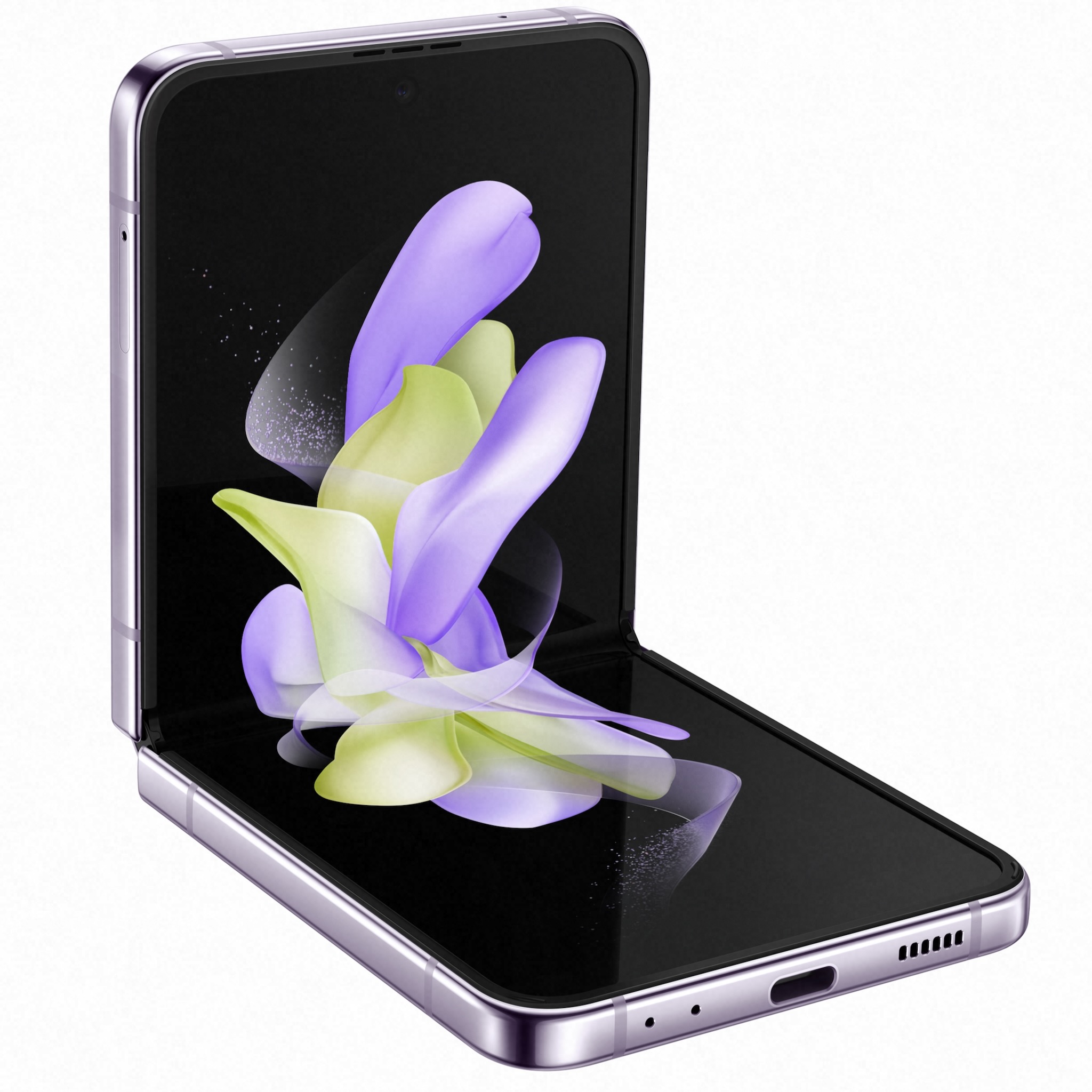
The upgrades that matter
The Galaxy Z Flip 4 is all about making a statement. Samsung added a ton of new features here, including a gorgeous new design that's in line with the Galaxy S22 and S22+, new color schemes, and plenty of customizability. It retains the IPX8 water resistance, and comes with a stronger glass layer that should make it that much more durable. The foldable is powered by the latest Snapdragon 8+ Gen 1, and the main 12MP camera has been overhauled, featuring large 1.8um pixels that allow the phone to take phenomenal photos. Throw in a larger 3700mAh battery, faster wireless charging, and four guaranteed Android OS updates, and it's easy to see why this is the foldable to get right now.
For
- Gorgeous new design with IPX8 rating
- Bigger battery with faster charging
- Better cameras
- Latest internal hardware
- Stronger foldable glass layer
- Four Android OS updates
Against
- No MicroSD slot
- Costlier than last year
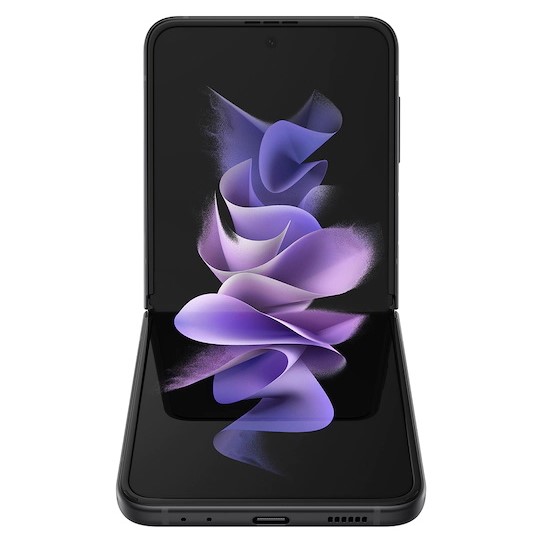
The affordable option
The Z Flip 3 is still going strong in 2022; the design is elegant, and the tweaks that Samsung made to the hinge mean that the foldable is inherently durable. The Snapdragon 888 may not be quite as fast as this year's alternatives, but it continues to deliver standout performance in just about any scenario. It has the same cover screen and inner 120Hz AMOLED panel as the Z Flip 4, and it will get the same number of Android OS updates. That said, it is lacking on the camera side of things, the battery life is average, and you don't get much in the way of fast charging either. Buy the Z Flip 3 if it's heavily discounted and you need the best foldable value; otherwise, you should pick up the Z Flip 4.
For
- Sleek design with IPX8 rating
- Sublime 120Hz AMOLED screen
- Hardware is still relevant
- Durable hinge design
- Four Android OS updates
Against
- Camera not as good
- Average battery life
- Slow charging
Samsung showed off in 2021 that it could deliver foldables that are just as resilient as its Galaxy S flagships, and it is building on that momentum with this year's launches. The Galaxy Z Flip 4 delivers a svelte design that looks striking, and it is available in exciting new colors. It features the latest hardware currently available, picks up major camera upgrades, has a larger battery, and faster charging tech. In short, there's a lot to like here, so let's find out how the Z Flip 3 holds up against the latest Z Flip 4, and which foldable you should purchase.
Samsung Galaxy Z Flip 4 vs. Z Flip 3: Design and screen
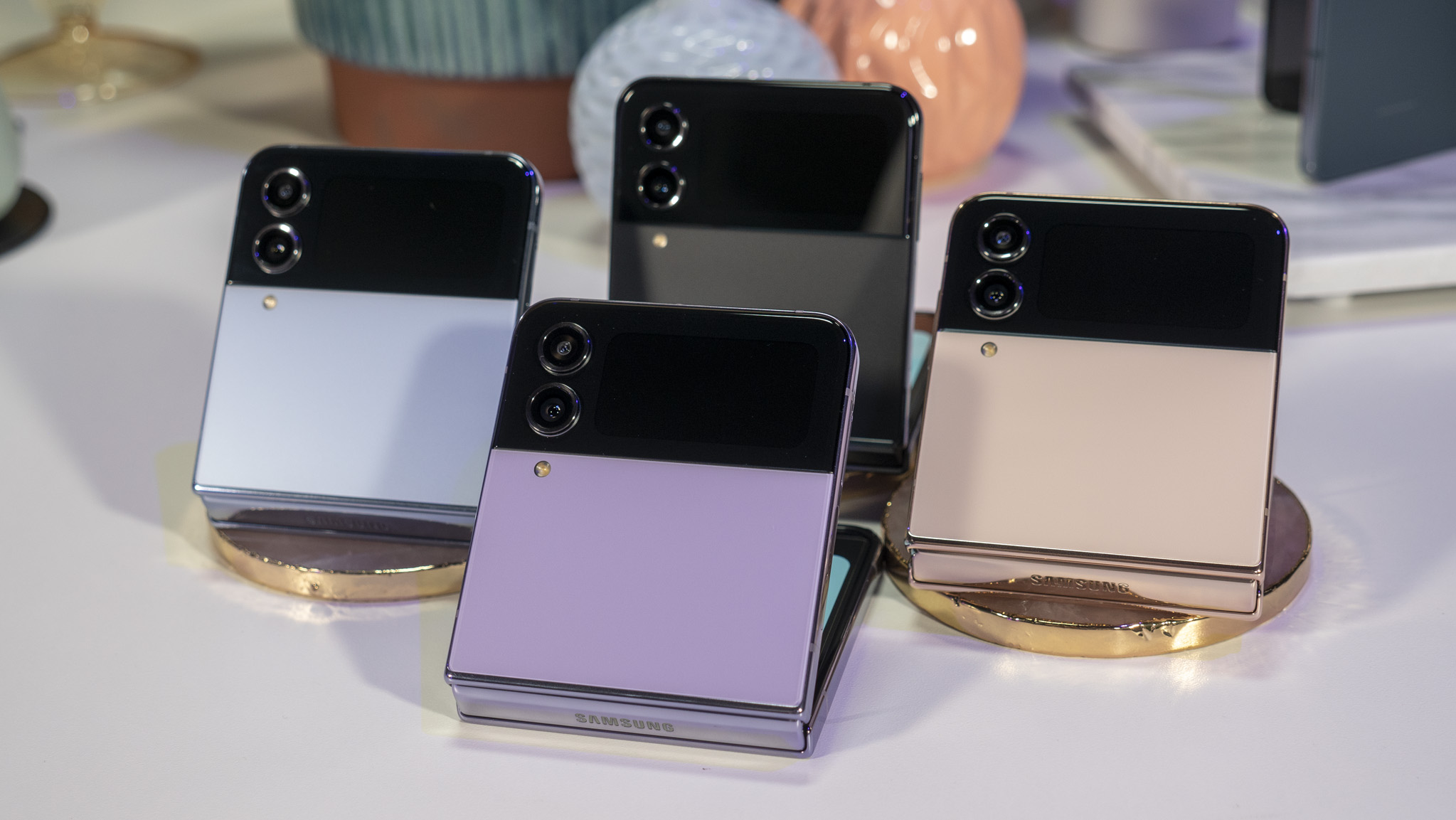
The Z Flip 3 stood out last year for its stylish design and attractive color variants, and Samsung hasn't changed the fundamentals too much this year. The Z Flip 4 continues the same design-focused ethos, and kicks things up a gear: it comes with flatter sides and bold new colorways, making it stand out a little more.
Both phones have standout designs, but Samsung outdid itself with the Z Flip 4.
Another unique addition with the Z Flip 4 is the fact that you can customize the colors to your liking — Samsung says there are 75 possible configurations. That ties into the overall messaging that Samsung has hammered home with its Z Flip foldables, where they're positioned more as fashion-forward accessories than regular phones. And the Z Flip 4 does a magnificent job fulfilling the brief.
Although the Z Flip 4 is clearly the star of the show, the Z Flip 3 looks just as elegant, and while it misses out on the extensive color options, you can pick it up in five different colors, and they look great in their own right. As for in-hand use, the Z Flip 4 is slightly narrower and smaller than the Flip 3, and that makes a slight difference.
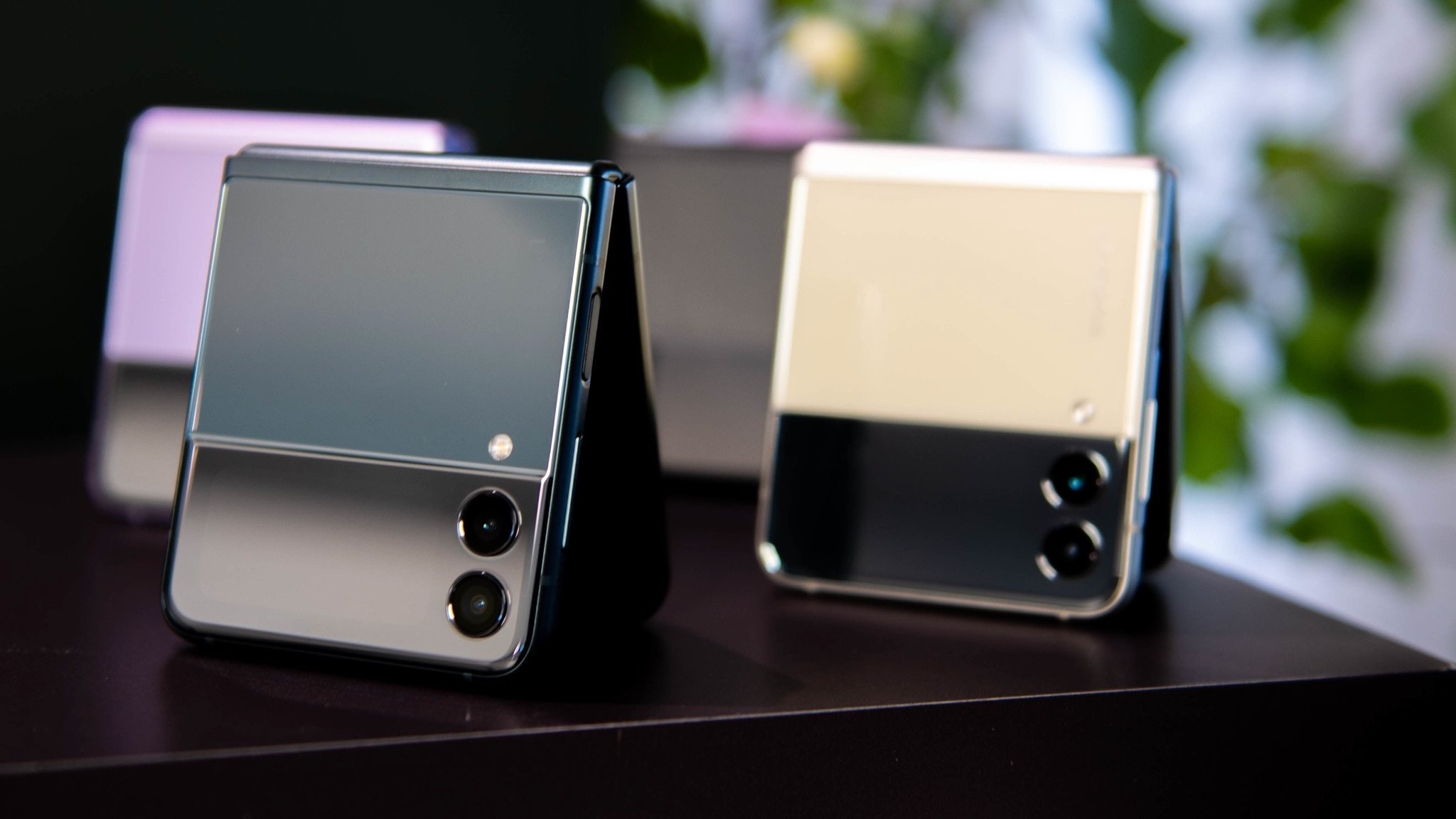
Both devices are quite tall unfolded — even more so than the S22 Ultra — but because of the narrow width, they don't feel cumbersome. The fact that you can fold the phones in half and tuck them into your pocket is undeniably cool, and that particular novelty doesn't fade away. If nothing else, using either device is a lot of fun.
Durability is a key issue for foldables, and Samsung showed that it can deliver in this area last year, building the Z Flip 3 out of an aluminum alloy that's lightweight but also resilient to daily use. The hinge is pivotal to this, and Samsung made further tweaks to the design this time, making the Z Flip 4 among the most durable foldables today.
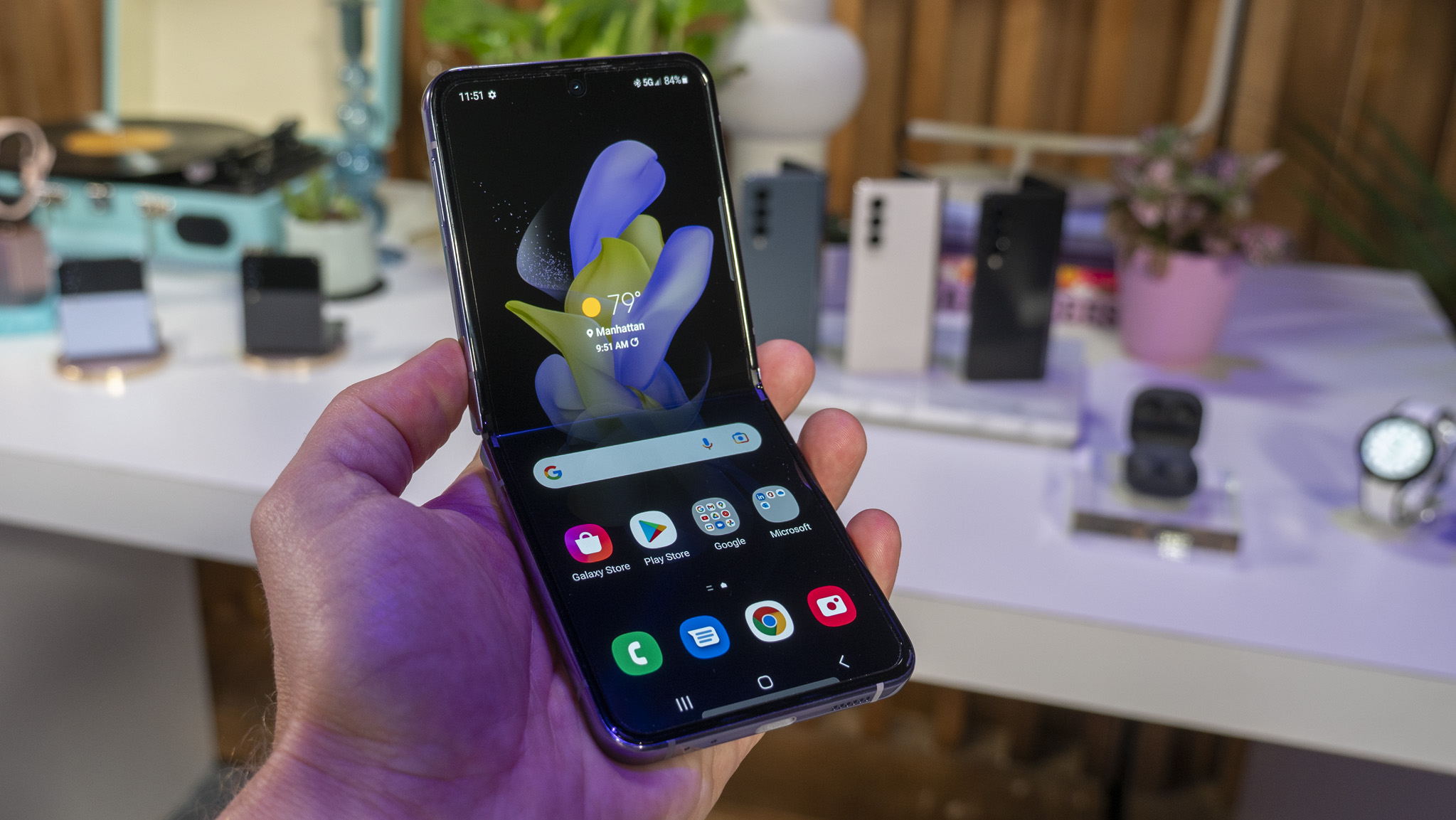
Coming to the screen, both phones feature the same 6.7-inch Dynamic AMOLED panel with 120Hz refresh and FHD+ (2640 x 1080) resolution. The outer cover screen is a 1.9-inch AMOLED panel with a resolution of 512 x 260, and that's also unchanged. The outer panel has more widgets and gets a few additional features on the Z Flip 4, but outside of that, Samsung didn't make many changes here.
Be an expert in 5 minutes
Get the latest news from Android Central, your trusted companion in the world of Android
Both phones have the ability to dynamically alter the refresh based on content playing on the screen, and you get the same set of customization options within One UI 4. Considering just how good the Z Flip 3 was in this regard, it makes sense for Samsung to not change things with the Z Flip 4.
But what is different this time is the foldable glass layer. Samsung made a lot of changes to the material in the intervening 12 months, and the result is that the glass layer is 45% stronger than what we've seen on the Z Flip 3. That's a huge deal as it makes the Z Flip 4 that much more resilient to tumbles.
On the whole, you're getting a sublime 120Hz AMOLED panel on both phones here, with the Z Flip 4 notching up a win thanks to its stronger glass layer.
Samsung Galaxy Z Flip 4 vs. Z Flip 3: Hardware and cameras
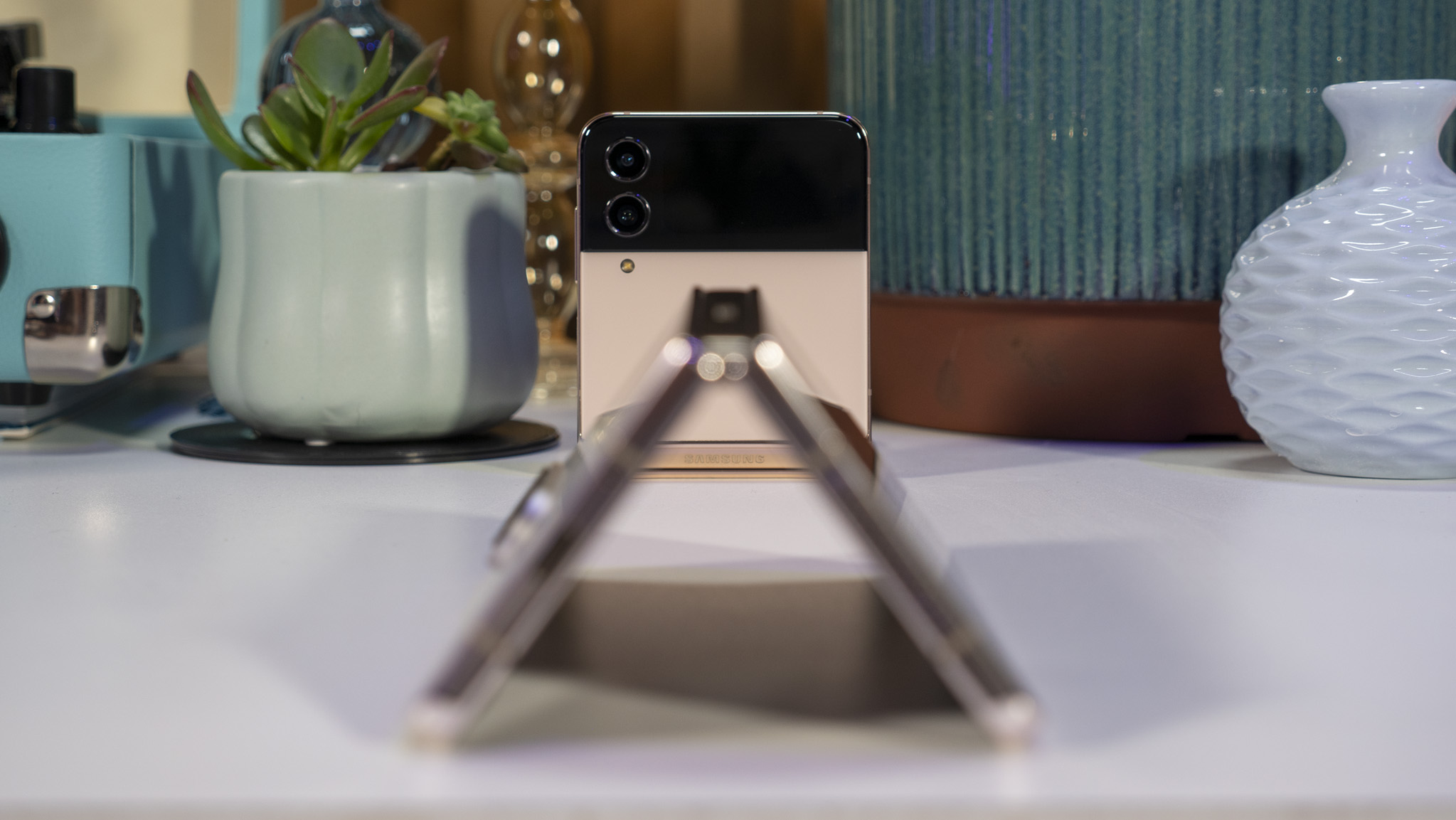
There isn't anything missing on the hardware side of things here. The Z Flip 3 features the Snapdragon 888, with the Z Flip 4 among the first Samsung phone to pick up the latest Snapdragon 8+ Gen 1.
The Z Flip 4 delivers in all the areas you care about: it is much more powerful, has better battery life, and faster charging.
Having used a few devices powered by the Snapdragon 8+ Gen 1 in recent months, I can confidently say that it is one of the best mobile SoCs you'll find today. It delivers effortless performance in demanding situations, but what's interesting is its energy efficiency — it manages to deliver the same level of performance as the Snapdragon 888 while consuming 40% less power.
This is particularly noteworthy here due to the fact that the Z Flip 4 has a smaller battery than regular flagships. Samsung increased the battery this year to 3700mAh, and the inherent gains that Qualcomm is offering combined with the larger battery means the Z Flip 4 has a considerable advantage over the Z Flip 3.
The 3300mAh battery on the Z Flip 3 doesn't quite manage to last all day, and when you do need to plug it in, there's just 15W wired charging and 10W wireless charging — not up to the mark for a flagship. Thankfully, the Z Flip 4 addresses this issue, with the phone offering 25W wired charging. While the wireless charging is still at 10W, Samsung says the foldable will take just 30 minutes to hit a 50% charge thanks to the switch to 25W wired charging.
| Category | Galaxy Z Flip 4 | Galaxy Z Flip 3 |
|---|---|---|
| Display | 6.7-inch Dynamic AMOLED 2x, LTPO (1-120Hz), 2640x1080 | 6.7-inch Dynamic AMOLED 2x, LTPO (20-120Hz), 2640x1080 |
| Cover display | 1.9-inch Super AMOLED, 260x512 | 1.9-inch Super AMOLED, 260x512 |
| Chipset | Snapdragon 8+ Gen 1 | Snapdragon 888 |
| Memory | 8GB | 8GB |
| Storage | 128GB, 256GB, 512GB | 128GB, 256GB, 512GB |
| Rear Camera 1 | 12MP, ƒ/1.8, 1.8μm, 83-degree FOV (main camera) | 12MP, ƒ/1.8, 1.4μm, 83-degree FOV (main camera) |
| Rear Camera 2 | 12MP, ƒ/2.2, 1.12μm, 123-degree FOV (ultra-wide) | 12MP, ƒ/2.2, 1.12μm, 123-degree FOV (ultra-wide) |
| Inside Camera | 10MP, ƒ/2.4, 1.22μm, 80-degree FOV | 10MP, ƒ/2.4, 1.22μm, 80-degree FOV |
| Battery | 3,700mAh (dual 1,850mAh batteries), 25W fast charging, 10W wireless charging, 4.5W reverse wireless charging | 3,300mAh, 15W fast charging, 10W wireless charging, 4.5W reverse wireless charging |
| Weight | 187 grams | 183 grams |
| Dimensions (folded) | 84.9 x 71.9 x 17.1mm | 86.4 x 72.2 x 17.1mm |
| Dimensions (unfolded) | 165.2 x 71.9 x 6.9mm | 166 x 72.2 x 6.9 mm |
And as for storage, both phones come in 128GB, 256GB, and 512GB variants, with all three models offering 8GB of RAM as standard. And as an added bonus, both devices get IPX8 water resistance.
One of the main issues with the Z Flip 3 last year was that it had strictly average cameras. It wasn't that the foldable took bad photos, but that it wasn't able to measure up to its Galaxy S21 siblings in this area. Samsung is fixing that with the Z Flip 4, outfitting the phone with a 12MP f/1.8 camera with larger 1.8um pixels that should take better photos in any given situation.
I haven't gotten a chance to test the cameras on the Z Flip 4 just yet, but the larger sensor combined with the might of the Snapdragon 8+ Gen 1 should make for a good combination. There's a new Flex Cam mode that sounds intriguing; it lets you take photos and videos using the rear cameras while using the inner screen as a viewfinder. Another new feature lets you take portrait shots when the device is folded.
As for auxiliary lenses, the Z Flip 4 has a 12MP wide-angle lens with 123-degree field of view, identical to its predecessor. There's no zoom lens this time as well, and that's understandable given the size constraints here. But other than that, the Z Flip 4 has a lot of the right hardware to deliver standout shots. I'll update this post with photos once I use the Z Flip 4 for any meaningful amount of time, so stay tuned.
Samsung Galaxy Z Flip 4 vs. Z Flip 3: Software
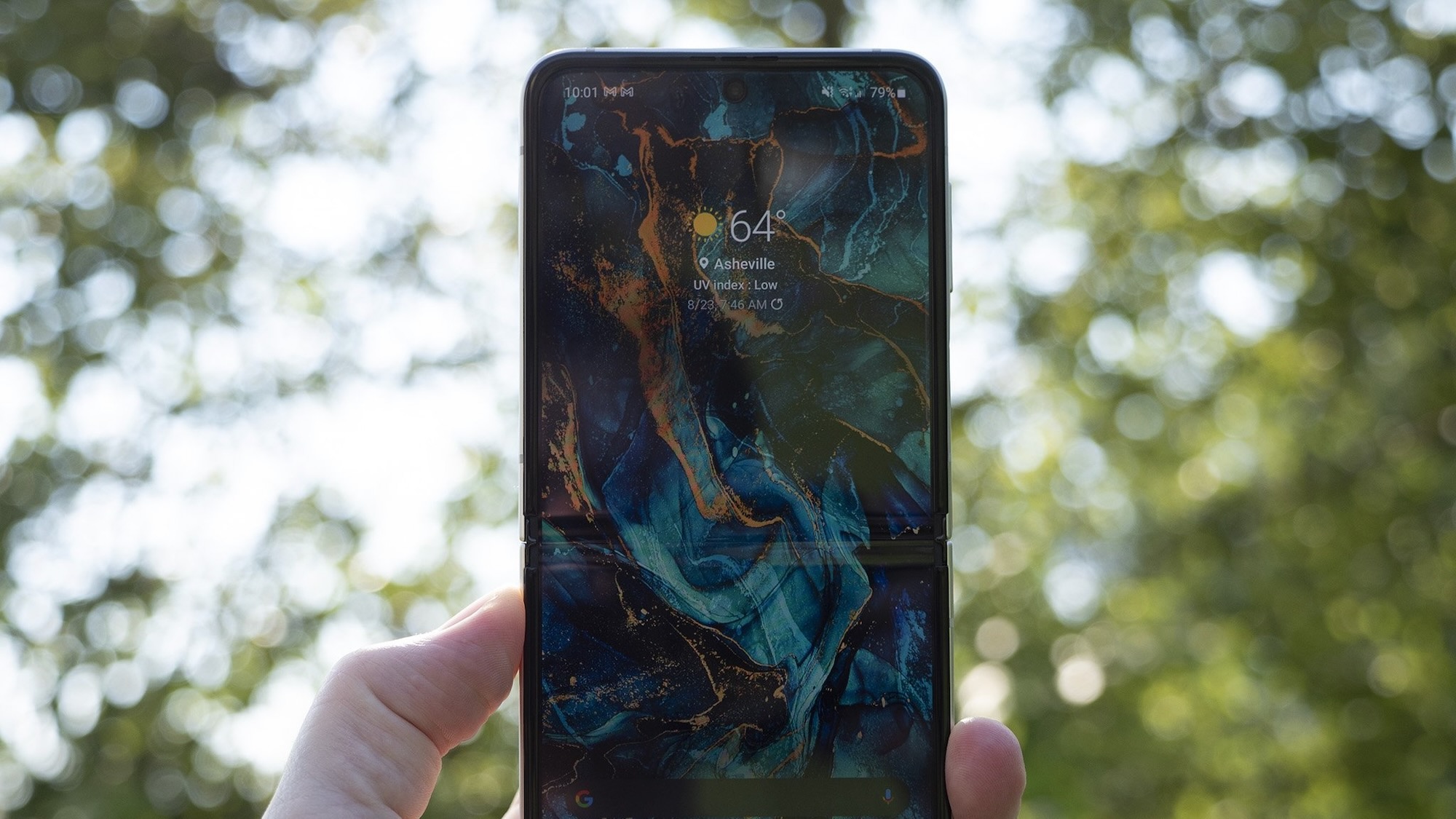
Samsung has overhauled One UI in recent years, delivering an interface that feels modern and heavily customizable. The Z Flip 3 launched with Android 11 out of the box, but got the One UI 4.1 build based on Android 12 at the end of last year. The Z Flip 4 has One UI 4.1 out of the box, and both devices have feature parity on the software front.
One UI 4.1 should be immediately familiar if you're already using a Samsung phone, and there are a lot of useful features within the interface that make it stand out. For one thing, Samsung is the only brand to still use its own phone dialer, with other manufacturers switching to Google's default dialer with Android 11.
Samsung also includes a ton of Microsoft utilities out of the box, but if you're not a fan of these, you can easily uninstall or disable them. There is some bloatware on the device — not as much as what you get on Galaxy A series phones — but still more than what I'd like to see on a flagship.
Other than that, Samsung nailed the brief when it comes to updates; both the Z Flip 4 and Z Flip 3 will get four guaranteed Android OS updates, more than any other Android phone. With the Flip 4 launching with Android 12, that means it will pick up the Android 16 build once it rolls out in four years.
Samsung Galaxy Z Flip 4 vs. Z Flip 3: Which should you buy?
With the Z Flip 4, Samsung has shown that it can deliver a foldable that holds up against its traditional flagships in all areas. This wasn't the case last year as the Galaxy Z series missed out on the camera front, and it's good to see Samsung fixing that shortcoming. The Z Flip 4 has a standout camera and a great wide-angle lens, and it benefits from a larger battery, faster wired and wireless charging, and a more durable hinge.
The Galaxy Z Flip 4 is the obvious choice if you want a sleek foldable in 2022 — it has enticing upgrades in most areas, and is a great all-round option.
Best of all, the foldable glass layer has been strengthened by a significant amount this year, and that should make the Z Flip 4 just as resilient as the Galaxy S22 when it comes to daily wear and tear. In short, the Z Flip 4 is basically a Galaxy S22+ that can be folded in half.
If you need a phone that stands out, nothing else comes close. It doesn't only hold its own against other foldables, but also measures favorably against the best Android phones.
And as for the Z Flip 3, it is still a good enough alternative, but it is lacking on the battery side of things, and the phone takes a long time to charge.
Given that Samsung is heavily incentivizing the Flip 4, you're better off picking up the latest foldable — unless you're getting an unmissable deal on the Flip 3.

The upgrades that matter
Samsung hasn't changed things too much with the Flip 4, instead delivering upgrades in vital areas. The foldable has a gorgeous design with exciting colors, the latest hardware, stronger foldable glass, standout cameras, and a larger battery with faster charging. Add all of that together and you get the ideal foldable.

The affordable option
The Flip 3 also has a svelte design, and the hardware holds up just fine in 2022. It has a durable hinge, and the cameras take good photos. It misses out on the battery side of things and the foldable glass layer isn't as strong, but if you can get a good deal on it, the Flip 3 is a good option.

Harish Jonnalagadda is Android Central's Senior Editor overseeing mobile coverage. In his current role, he leads the site's coverage of Chinese phone brands, networking products, and AV gear. He has been testing phones for over a decade, and has extensive experience in mobile hardware and the global semiconductor industry. Contact him on Twitter at @chunkynerd.
